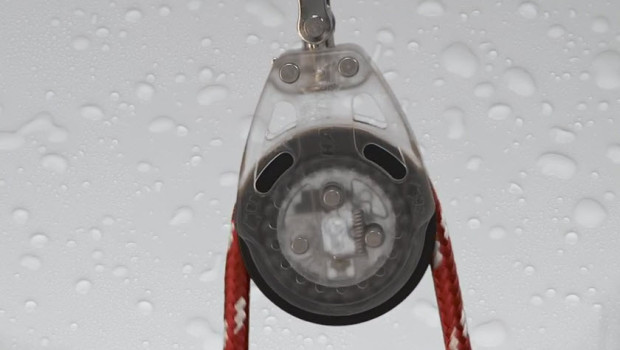Switch or Ratchamatic: The Ratchet Block Question
Published on June 14th, 2016
Jim Andersen from the Harken tech team answers some questions about ratchet blocks…
At Harken we manage line under load. We try to reduce friction wherever we can with our ball bearing efficient blocks. But with a ratchet block we’re trying to introduce friction back into the system at the holding point so that line under load can be held in one’s hand for an extended period of time.
We do that with the ratchet block, and we have anywhere between 10-1 to 15-1 holding power depending on the diameter of the block. We have two types of ratchet blocks and we get the question quite often regarding the applications for the switchable ratchet block and an automatic or what we call a ratchamatic block. One block has an on-off switch while the other block is switched automatically.
One way to think of the two types of blocks is a switchable ratchet is designed so that you switch it on and off for the user who is trying to hold on to higher load. So for instance, if there are two people with different strengths sailing the same boat, one may be able to hold the line in the free-running mode but the other person might need some assistance and therefore they might want to switch the ratchet on or off.
With a ratchamatic or an automatic switching ratchet block, it is preset to a line load that engages the ratchet mechanism. That is used in a system where the line load is typically for holding always going to be more than someone would want to hold for an extended period of time. But, when it comes to releasing the line, you want the line to run very freely.
With the switchable ratchet, when the ratchet is on, releasing the line will drag as intended with friction over the ratchet sheave. So an asymmetric spinnaker sheet on a smaller keelboat, where someone is holding the line and trimming by hand, but then wants to release that line and let that sheet run freely, this is a perfect place for a ratchamatic block.
The automatic ratchet also is very convenient in a boat that has a trapeze or racks such as some of the skiffs or multihulls that have a main sheet system that has a ratchet in it. It’s very difficult to get in off the wire or off the rack to come inboard to switch the ratchet off in order to ease out. That’s a good place for an automatic ratchet.









 We’ll keep your information safe.
We’ll keep your information safe.